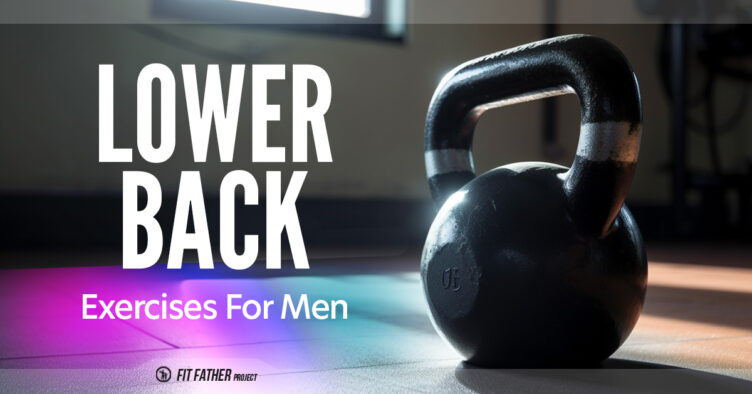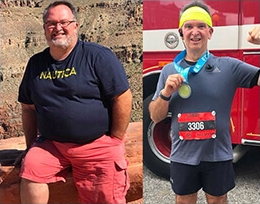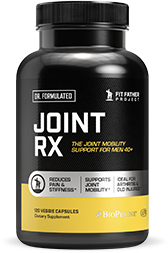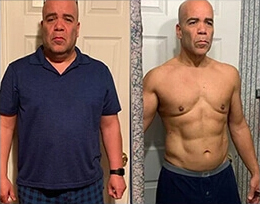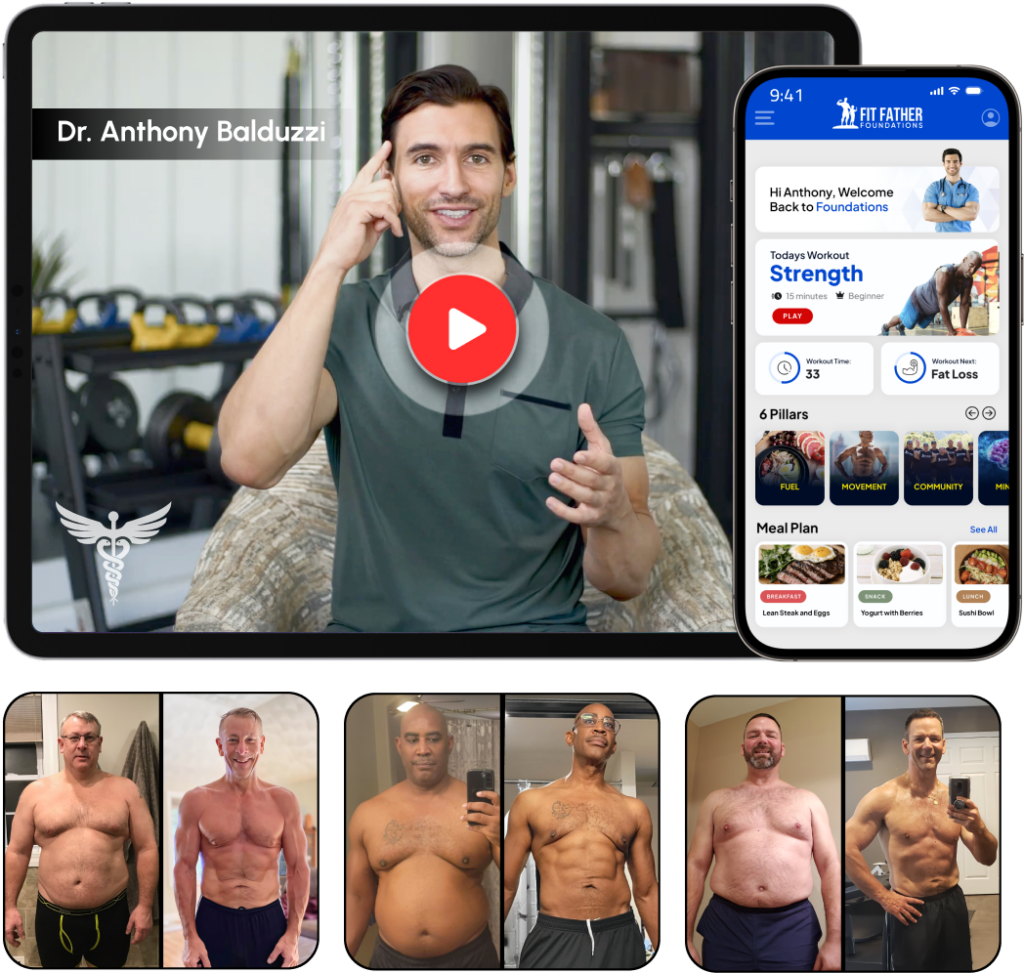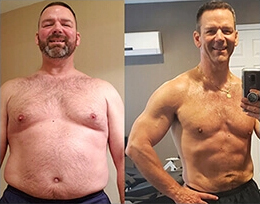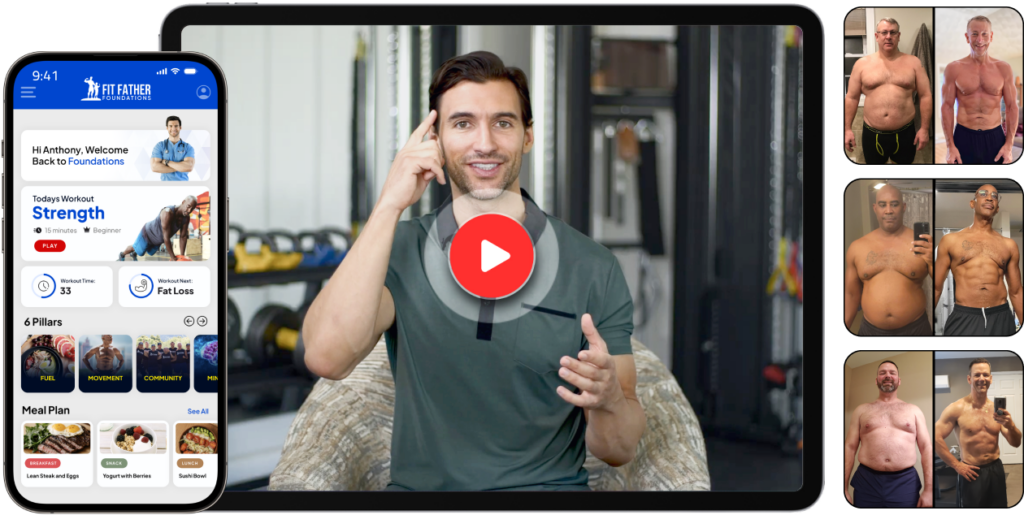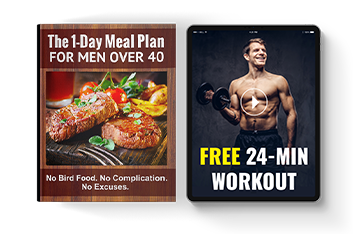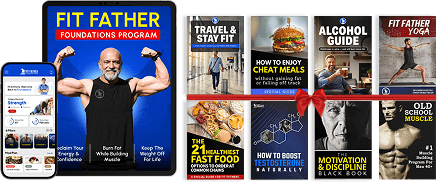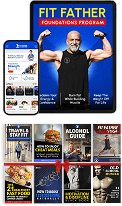Dealing with back pain? As you may have heard, sitting is the new smoking, so it's time to add lower back exercises to your workout arsenal!
Sitting obviously isn't the only cause of back pain, but many careers require sitting all day. Whether you're a driver, an office worker, or working from home, you will sit down for hours.
Of course, work is not the only place you sit.
The couch in the evening with your favorite program is also very inviting — after all, you have to wind down somehow!
But there are many other causes of back pain, and luckily, there are things you can do about it. Please keep reading to learn more about back pain and how to relieve it with some great lower back exercises.
Even if you aren't suffering from back pain, these are great workouts to add to your routine!
Learn how to strengthen your lower back muscles with these simple exercises!
Common Causes of Back Pain
At some point, you will encounter back pain in some form or another. This can occur in the neck, middle, or lower back.
While back pain can occur from other medical issues, such as kidney stones, this article will focus on the pain in the lower back's muscles, bones, and connective tissues.
Being Overweight
Being overweight and carrying excess weight in the stomach puts extra stress and pressure on the lumbosacral curve in the lower back.
This could result in biomechanical changes in the lumbar spine and even spinal misalignment.
This study found a statistically significant association between BMI and low back pain.
Muscle Strain From Overexertion/Injury
Your job can play a big role in developing back pain.
Obviously, if you have a very active job where you do a lot of heavy lifting, pushing, pulling, or bending, this increases the chance of straining your back muscles.
However, sedentary desk jobs can also lead to neck and lower back pain.
Sitting all day at a desk with poor posture can cause abnormal stress on the lower back muscles, leading to pain and muscle spasms.
Osteoarthritis
Osteoarthritis can occur in the back, just like in another joint in the body.
As men get older, the chances of developing osteoarthritis increase, and it can be worsened with certain activities.
Herniated Discs
The spine has discs that separate and cushion the vertebrae.
Sometimes, the material in the disc can escape and press on the nerves in the spine, causing back pain and pain that can radiate down into the legs.
Men are more prone to disc rupture as they are predominantly involved in work that requires manual labor, such as heavy lifting, pushing, and pulling.
The Effects of Sitting All Day
Recent studies have concluded that the average adult sits for seven hours a day, which can increase to as many as 10 hours as you age.
This can lead to several health issues now and in the future.
It is important to be aware of what these are:
- Back pain – the leading cause of sick days is a result of slouching and excess pressure on the lower discs in your spine. These push on the nerves and send pain through your body, preventing you from undertaking most activities.
- Slower metabolism – sitting requires less effort by your muscles and organs; your body compensates for this by slowing down your metabolism. Unfortunately, this can lead to weight gain, a lack of energy, and even diabetes, as your body is less efficient at controlling blood sugar levels.
- Organ Damage – extended periods of sitting and slower metabolism mean less blood is getting around your body, potentially starving your vital organs of oxygen and nutrients.
Of course, there are many more issues, some of which you may already be experiencing.
The effects are compounded by aging as your body naturally slows in response to lower testosterone levels.
After age 30, your Testosterone levels start declining. Add in some stress and a “less than perfect” diet… everything gets worse fast. You feel tired all the time. It’s hard to lose fat. It feels like you lost your edge. That’s the sad story that happens to most guys 40+. But now, it doesn’t have to be that way for you….The Natural Testosterone Booster Guys 40+ Are Using For More Energy, Drive, & Results
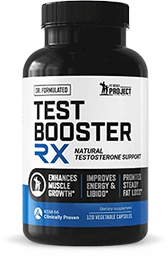
Exercises That Worsen Back Pain and What To Do Instead
Research has shown that exercise and physical activity are great preventive measures for back pain.
However, choosing exercises that don’t worsen any pre-existing back pain is essential.
Obviously, any exercise that causes pain should be avoided, but certain moves are definitely worse than others if you are already suffering from back pain.
Here are exercises to avoid if you have low back pain and alternatives to do instead.
Barbell Squats
Squats are an awesome exercise to strengthen your glutes, quads, and hamstrings. Unfortunately, this can stress the lower back greatly, especially if you have poor form.
Alternative: Kettlebell Squats
To avoid the risk of worsening any current back pain, you can hold a kettlebell or dumbbell in front of you at chest level while squatting. Using a lighter weight and holding it close to your body can limit stress on your lower back muscles.
Sit-Ups
Traditional sit-ups can worsen back pain by increasing pressure on the discs in your spine. Studies have shown that sit-ups can increase pressure in the discs by up to 210%, increasing the risk of worsening back pain or even developing a herniated disc.
Alternative: Dead Bug
During this core workout, you are always pressing the lower back into the floor to ensure that no excess weight is transferred into the back.
- To do this exercise, lie flat on your back with your arms and legs extended toward the ceiling.
- Engage your core to press your lower back firmly into the floor.
- Maintaining this back position, lower one arm toward the floor behind you and the opposite leg toward the floor in front of you to form one straight line parallel to the floor.
- Pause, then squeeze through the abs to raise both back toward the ceiling.
- Repeat on the opposite side.
Supermans
Strengthening the small core muscles of the lower back can be great for improving back pain. However, the Superman exercise can further compress these discs for guys with bulging or herniated discs in the lower back.
Alternative: Bird Dog
This exercise strengthens the entire core, including the lower back, while keeping the spine neutral.
- To do this, start on all fours with your hands below your shoulders and knees below your hips.
- Keep your core engaged, and don’t let your hips sink or back arch.
- Raise your right hand and the left leg to form a straight line parallel to the floor.
- Keep the torso completely still without leaning or wobbling.
- Pause, lower both limbs to the floor, and repeat on the other side.
Shoulder Press
Like barbell back squats, when performing the shoulder press, guys with poor form tend to place the weight into their lower back or arch to make the exercise easier.
Alternative: Pike Push-Ups
- With your hands and feet on the ground, hike your hips to create an upside-down V with your body.
- Keeping your legs straight, bend your elbows and bring your head towards the ground before returning to your starting position.
- This exercise will develop strength and stability in the shoulders without putting pressure on the lower back.
Deadlift
A properly performed deadlift is one of the best full-body exercises, but poor technique can make the deadlift one of the worst exercises for a bad back. This typically happens when lifters let the lower back dip, the upper back rounds, or the bar travels too far away from the legs.
Alternative: Romanian Deadlift
Yes, you can still perform deadlifts with back pain. The key is to change up the technique so that you can get all of the benefits of the lift without the risk of worsening any underlying back issues. Romanian deadlifts are a safer alternative for men with back pain.
- Use an overhand grip to hold a barbell or dumbbell at hip level.
- Draw your shoulders back and keep your spine straight.
- Push your hips back as you slowly lower the bar toward your feet.
- Press your hips forward to come into a standing position with the barbell or dumbbell in front of your thighs.
Join our 6-Week Program...
You'll Gain Health for Life!In just 6-weeks on our FOUNDATIONS Program, you'll transform your health and body, for the rest of your life!
Other Lower Back Exercises To Try
Planks
Planks are a great exercise, but many people dismiss them as too easy.
The basic position is similar to the starting position of a push-up. Put your toes on the ground and your forearms, or just your hands, keeping your back straight in the process.
Your muscles will be working, but holding this pose really boosts the strength of your back, abs, and core.
Planks will improve the strength of all the muscles in your back, although they generally target the upper back more than the lower.
The great thing about the plank is that there are virtually unlimited variations, ensuring you keep working out all parts of your back!
Variations to try include:
- Side Planks
- One Leg Planks
- Plank Jacks
- Opposing Limbs Extended
- Planks On A Ball
Hold the plank for a minimum of 10 seconds; aiming for 30 seconds is a good starting point. Every day, adding 5-10 seconds should be possible, gradually increasing the time spent planking.
The benefit will be felt in your back and core. If you want to take these up, try doing them with weights strapped to your arms and legs. You can also use a resistance band around your wrists and ankles to increase the effects of any plank variation.
Bridge
Regularly doing this exercise will strengthen your lower back and your hips.
It’s really easy to do — the challenge is holding the position for 5 seconds and repeating it 10-12 times.
- Lay on your back with both arms by your sides, and slowly bring your feet towards your bottom by bending your knees.
- Your feet should remain flat on the floor.
- Now lift your hips off the floor as far as you can, focusing on contracting your buttocks.
- Once you’ve held for 5, return to the starting position and repeat.
- Again, the gain is experienced through the number of these you do.
You can increase the effectiveness of this exercise by extending one of your legs off the floor while doing the bridge. It will increase the load, strengthen your back, and, at the same time, improve hip strength.
Pull-ups
The pull-up is another easy exercise that can be performed anywhere. You don’t even need a pull-up bar! Any space that allows you to get a good grip and enough space to lift your body will do.
Pull-ups work your shoulders and your lats, and you’ll also feel the burn in your arms. It is also the exercise many people overlook, generally because it appears hard to achieve.
Building your upper back and shoulder strength through pull-ups will boost your ability to do everyday activities and more challenging exercises.
If you can’t do any pull-ups, start with the dead hang. This involves gripping the bar with your palms facing away from you, lifting your feet off the floor, and hanging with your arms straight.
When you’re ready, you can move to the flex position. Pull yourself upwards into the top position of a pull-up, with your chin above the bar. You’ll find this easier when you grip the bar with your palms facing you.
Again, hold this pose for as long as you can.
The final step is actually to do a pull-up. This involves moving from the hanging position to the flex and holding for 3 seconds before returning to the hanging position. Over time, you’ll aim to do 3 sets of 10 reps.
You’ll be amazed at how much stronger this makes your back!
Wall Sit
What could be easier than sitting down? The wall sit requires you to sit with your back against the wall and your knees over your ankles.
Lift your hands above your head, putting your palms against the wall. Take a deep breath and concentrate on keeping your pelvis tucked in. You may have realized that there is no chair!
You need to hold the pose for 45 seconds. If you can’t do this on your first attempt, hold the pose as long as possible and work your way up to it.
Take a 30-second rest before repeating twice.
You’ll feel this working your back muscles and your thighs. You can make it more challenging and rewarding by holding a kettlebell in your hands and keeping your hands (and the kettlebell) in front of your chest.
Stretches To Help Relieve Back Pain
In addition to using alternative exercises, there are also some stretches you can add to your exercise routine to help ease back and knee discomfort.
Child’s Pose
This yoga pose stretches your glutes, hamstrings, and lower back muscles. Its relaxing effect on your body also helps to loosen up tight lower back muscles, promoting flexibility and blood circulation along the spine.
- Start with your hands and knees on the ground and sit back to rest your hips on your heels.
- Hinge at your hips as you fold forward, walking your hands out before you.
- Rest your belly on your thighs.
- Extend your arms in front of or alongside your body with your palms facing up.
- Focus on breathing deeply and relaxing any areas of tension or tightness.
- Hold this pose for up to 1 minute.
Knees to Chest
This stretch relaxes your lower back, hips, thighs, and glutes.
- To do this stretch, lie on your back with both knees bent and your feet flat on the floor.
- Keep your left knee bent, or extend it straight along the floor.
- Draw your right knee into your chest, clasping your hands behind your thigh or at the top of your shinbone.
- Lengthen your spine all the way down to your tailbone, and avoid lifting your hips.
- Hold this pose for 5-10 breaths.
- Repeat with the other leg.
Seated Spine Twist
This stretch works your hips, glutes, and lower back and will help increase mobility in your spine.
- Start sitting with both legs extended out in front of you.
- Bend your right knee and place your foot outside your left thigh.
- Bend your left leg, placing your foot near your right thigh.
- Lift your arms with your palms facing each other.
- Starting at the base of your spine, twist to the right side.
- Place your right hand behind you for support.
- Place your left arm around your right leg as though you’re hugging it, or bring your upper arm to the outside of your thigh.
- Hold this pose for up to 1 minute.
- Repeat on the other side.
Cat-Cow Stretch
The cat-cow stretch is a great way to stretch your lower spine while stretching your shoulders, neck, and chest.
- Start on your hands and knees, with your hands directly below your shoulders and knees below your hips.
- Press into your hands and feet as you inhale to look up, allowing your belly to fill with air.
- Exhale, tucking your chin into your chest and arching your spine toward the ceiling.
- Continue this pattern of movement, moving with each breath.
- Do this for 5-10 breaths.
Hamstring and Calf Stretch
The hamstring muscle crosses the back of the knee. To relieve tightness in this area, try this stretch.
- Stand about one foot from a wall and place your hands on the wall at shoulder height.
- Take a step back with one leg while pushing into the wall.
- Keep your back straight and press your heels into the floor.
- Hold for 15 to 30 seconds.
- Step forward and repeat with the other leg.
- Repeat the exercise three times on each side.
Standing Quad Stretch
The standing quad stretch loosens the muscles and tendons in the front of your knee joint.
You’ll feel the stretch in your quads in the front of your thigh.
- Stand upright and hold onto a door or chair for support.
- Grab your left foot with your left hand and pull your heel up towards your butt.
- Hold for 15-20 seconds, then switch sides.
After watching his own Dad lose his health and pass away at the young age of 42, Dr. Balduzzi founded The Fit Father Project and Fit Mother Project to help busy dads and moms get and stay healthy for their families. Dr. Anthony Balduzzi holds dual degrees in Psychology & Nutrition from the University of Pennsylvania, a Doctorate of Naturopathic Medicine, and is also a former national champion bodybuilder. He’s is most proud of the fact that he’s helped over 40,000 families in over 100 countries lose weight and get healthy for life.![]()
Dr. Anthony Balduzzi, NMD
Men's Health Doctor & Founder
Fit Father Project & Fit Mother ProjectFounder, Fit Father Project & Fit Mother Project
The FOUNDATIONS Program is created by Dr. Anthony Balduzzi for Men 40+ who want Lifelong Health. In just 6-Weeks following FOUNDATIONS, you'll experience: FOUNDATIONS has transformed 60,000 lives! Are you ready to experience true lasting health & results?Join our 6-Week Doctor Designed Health Program. You'll Gain Foundational Health for the Rest of Life.
*Please know that weight loss results & health changes/improvements vary from individual to individual; you may not achieve similar results. Always consult with your doctor before making health decisions. This is not medical advice – simply very well-researched info on lower back exercises for men.

